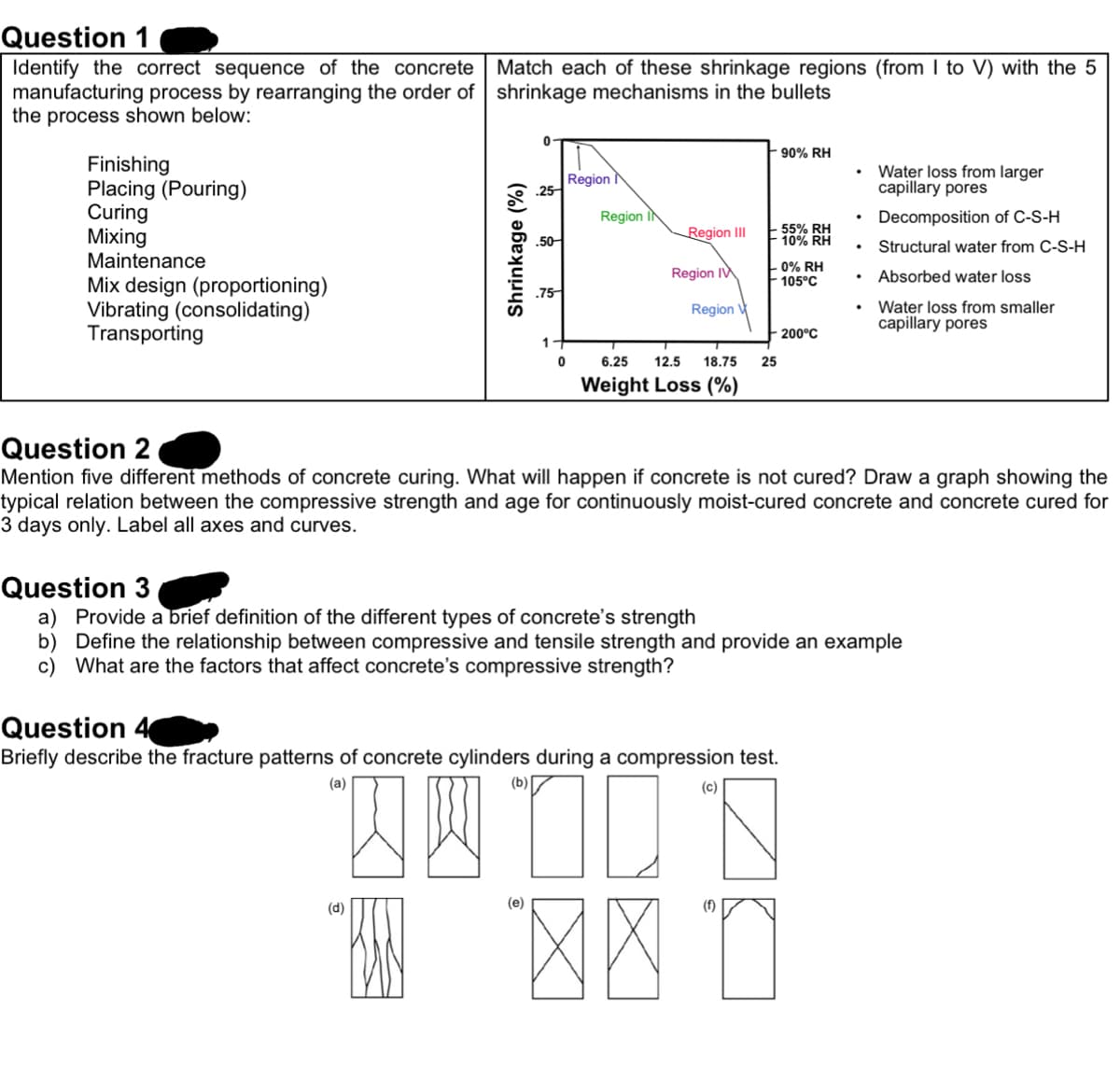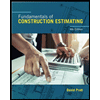Question 4 Briefly describe the fracture patterns of concrete cylinders during a compression test. (a) (b) (c) (d) (e) ☑ (f)
Question 4 Briefly describe the fracture patterns of concrete cylinders during a compression test. (a) (b) (c) (d) (e) ☑ (f)
Fundamentals Of Construction Estimating
4th Edition
ISBN:9781337399395
Author:Pratt, David J.
Publisher:Pratt, David J.
Chapter11: Pricing Concrete Work
Section: Chapter Questions
Problem 4RQ
Related questions
Question
Question 4

Transcribed Image Text:Question
Identify the correct sequence of the concrete
manufacturing process by rearranging the order of
the process shown below:
Finishing
Placing (Pouring)
Curing
Mixing
Maintenance
Mix design (proportioning)
Vibrating (consolidating)
Transporting
Match each of these shrinkage regions (from I to V) with the 5
shrinkage mechanisms in the bullets
Shrinkage (%)
90% RH
Water loss from larger
capillary pores
Decomposition of C-S-H
0
Region N
25
Region IN
Region III
55% RH
.50
10% RH
Structural water from C-S-H
Region IV
Region
0% RH
105°C
Absorbed water loss
Water loss from smaller
capillary pores
200°C
1
0
6.25 12.5 18.75
25
Weight Loss (%)
.75
Question 2
Mention five different methods of concrete curing. What will happen if concrete is not cured? Draw a graph showing the
typical relation between the compressive strength and age for continuously moist-cured concrete and concrete cured for
3 days only. Label all axes and curves.
Question 3
a) Provide a brief definition of the different types of concrete's strength
b) Define the relationship between compressive and tensile strength and provide an example
c) What are the factors that affect concrete's compressive strength?
Question 4
Briefly describe the fracture patterns of concrete cylinders during a compression test.
(a)
(b)
(c)
(d)
(f)
☐☐ ☐ ☐
Expert Solution
This question has been solved!
Explore an expertly crafted, step-by-step solution for a thorough understanding of key concepts.
Step by step
Solved in 3 steps

Knowledge Booster
Learn more about
Need a deep-dive on the concept behind this application? Look no further. Learn more about this topic, civil-engineering and related others by exploring similar questions and additional content below.Recommended textbooks for you

Fundamentals Of Construction Estimating
Civil Engineering
ISBN:
9781337399395
Author:
Pratt, David J.
Publisher:
Cengage,

Fundamentals Of Construction Estimating
Civil Engineering
ISBN:
9781337399395
Author:
Pratt, David J.
Publisher:
Cengage,